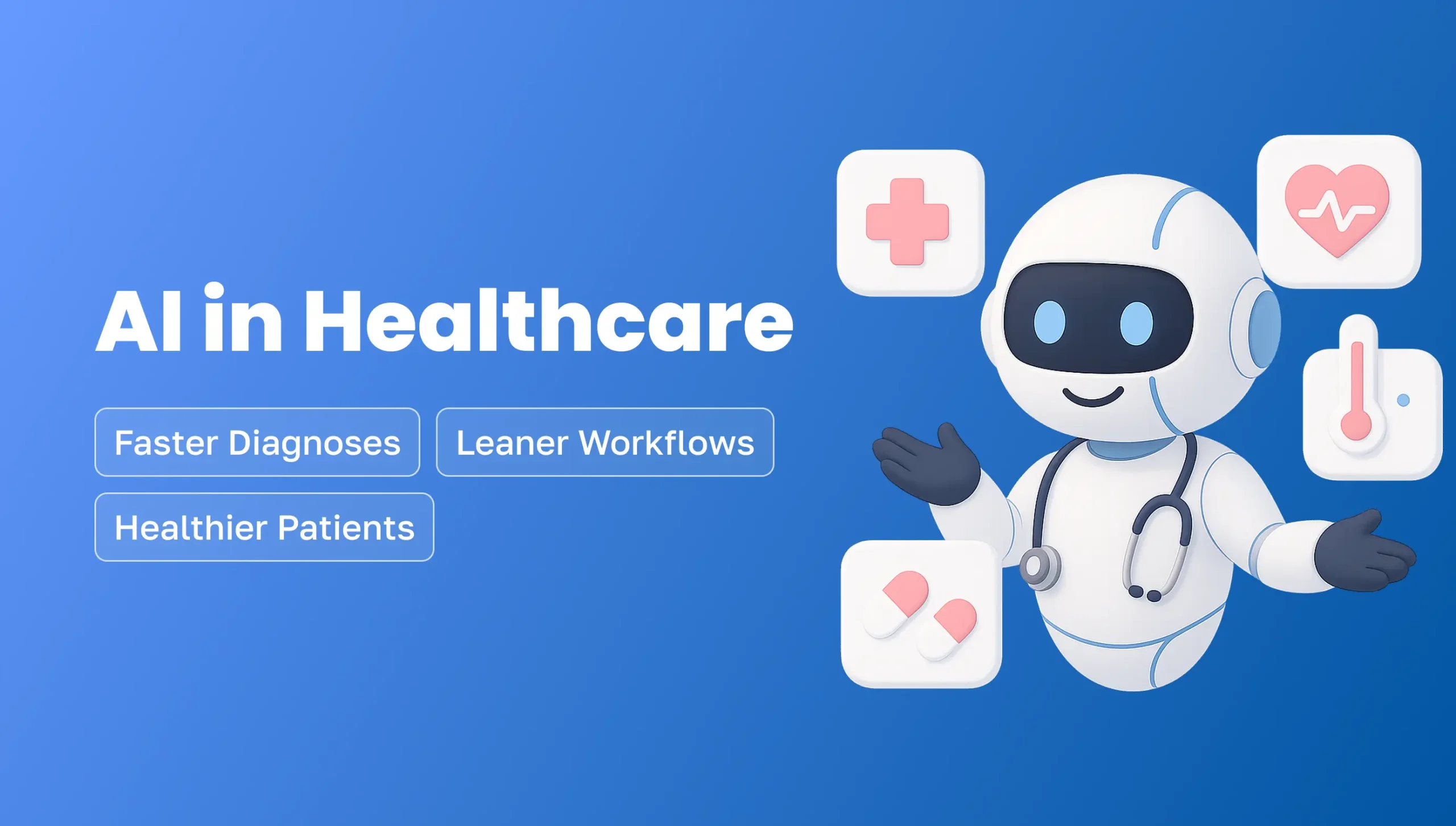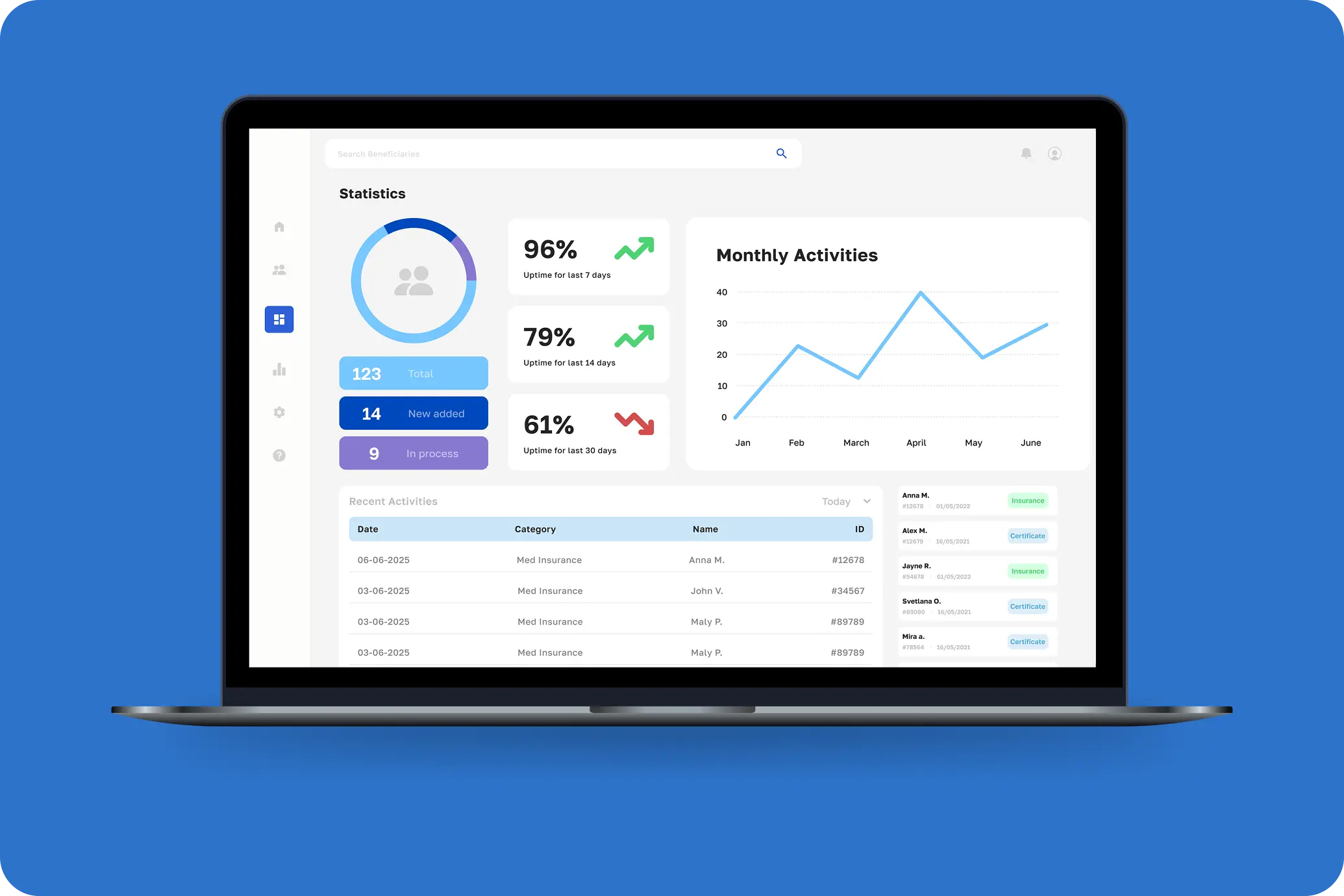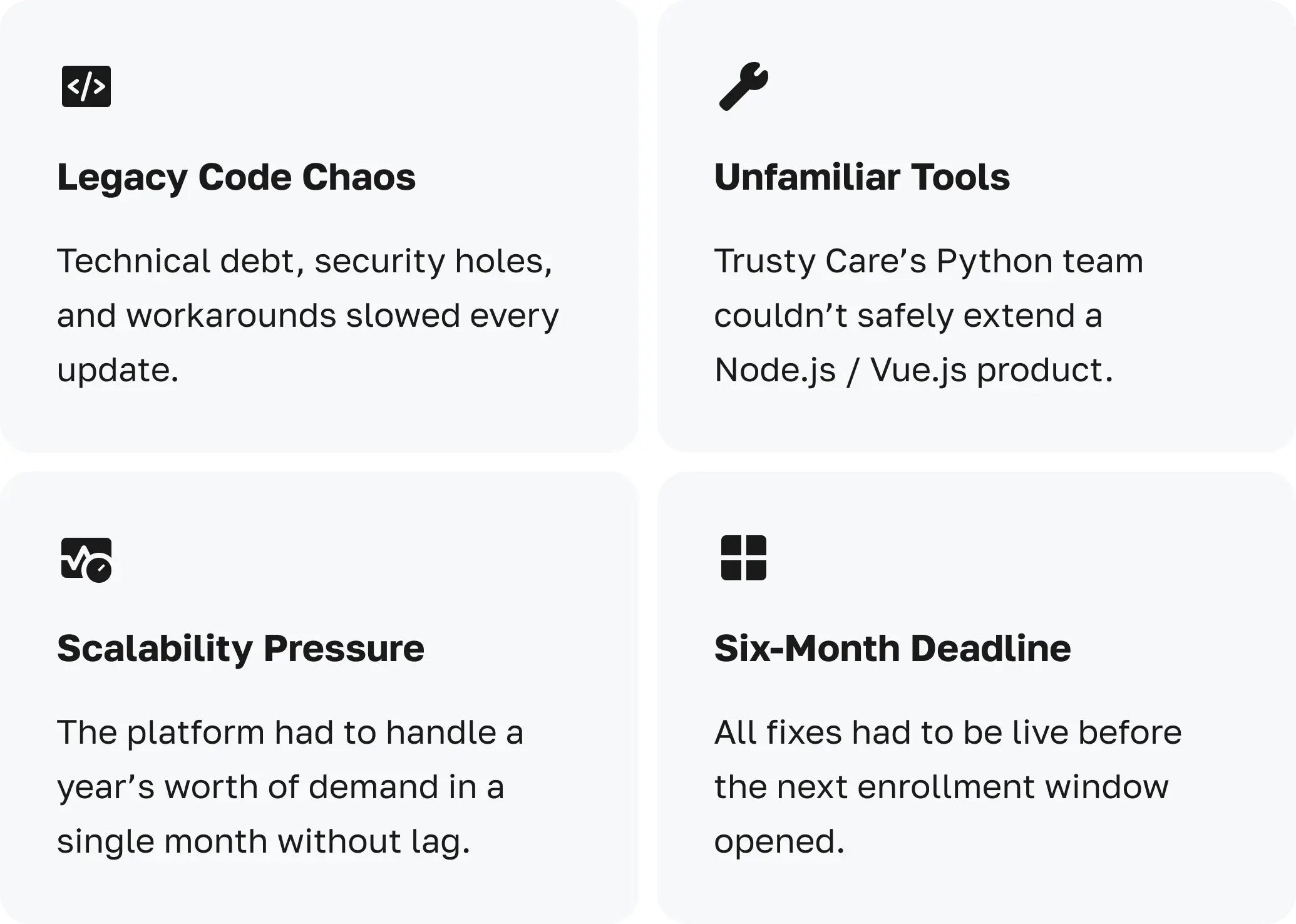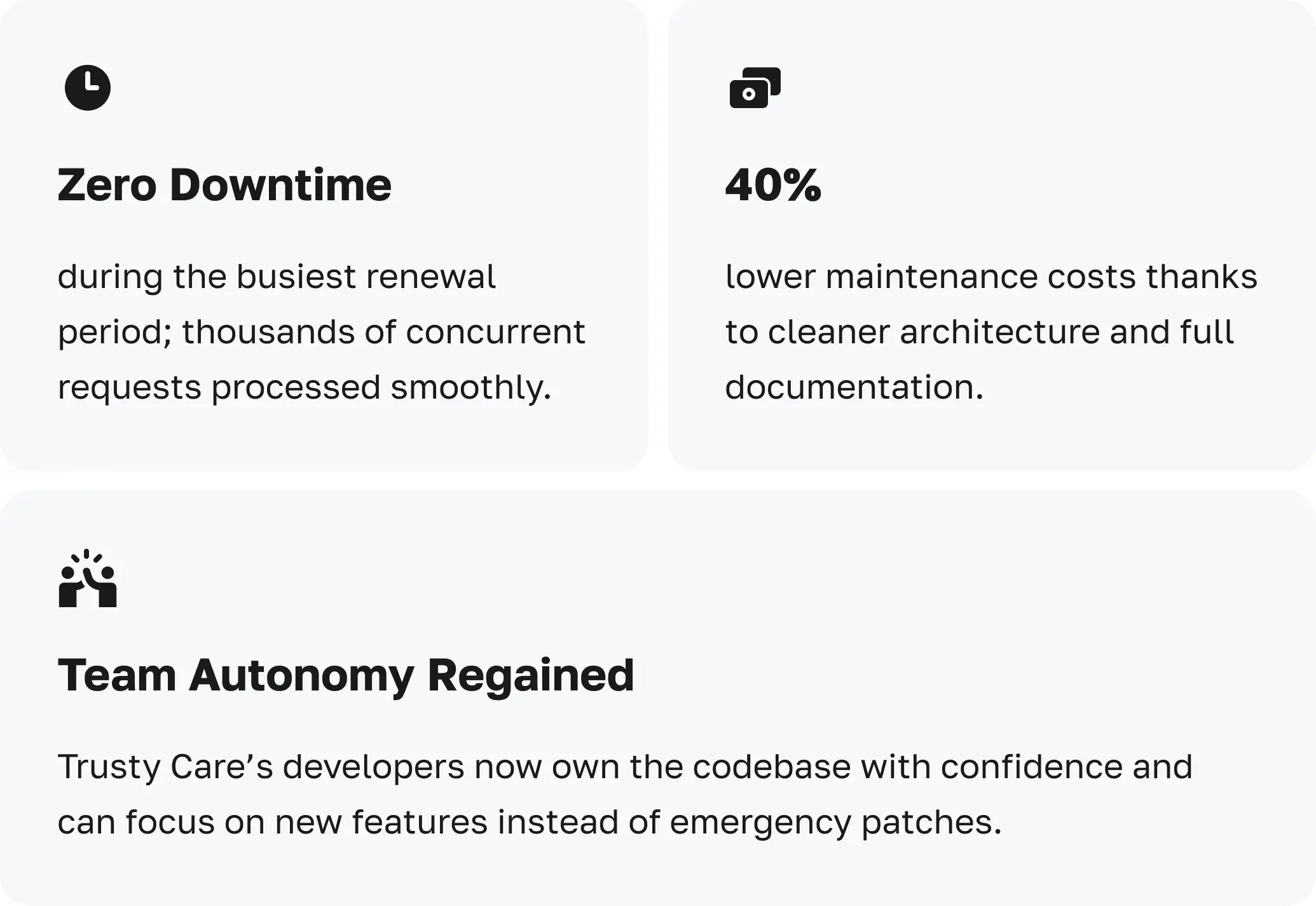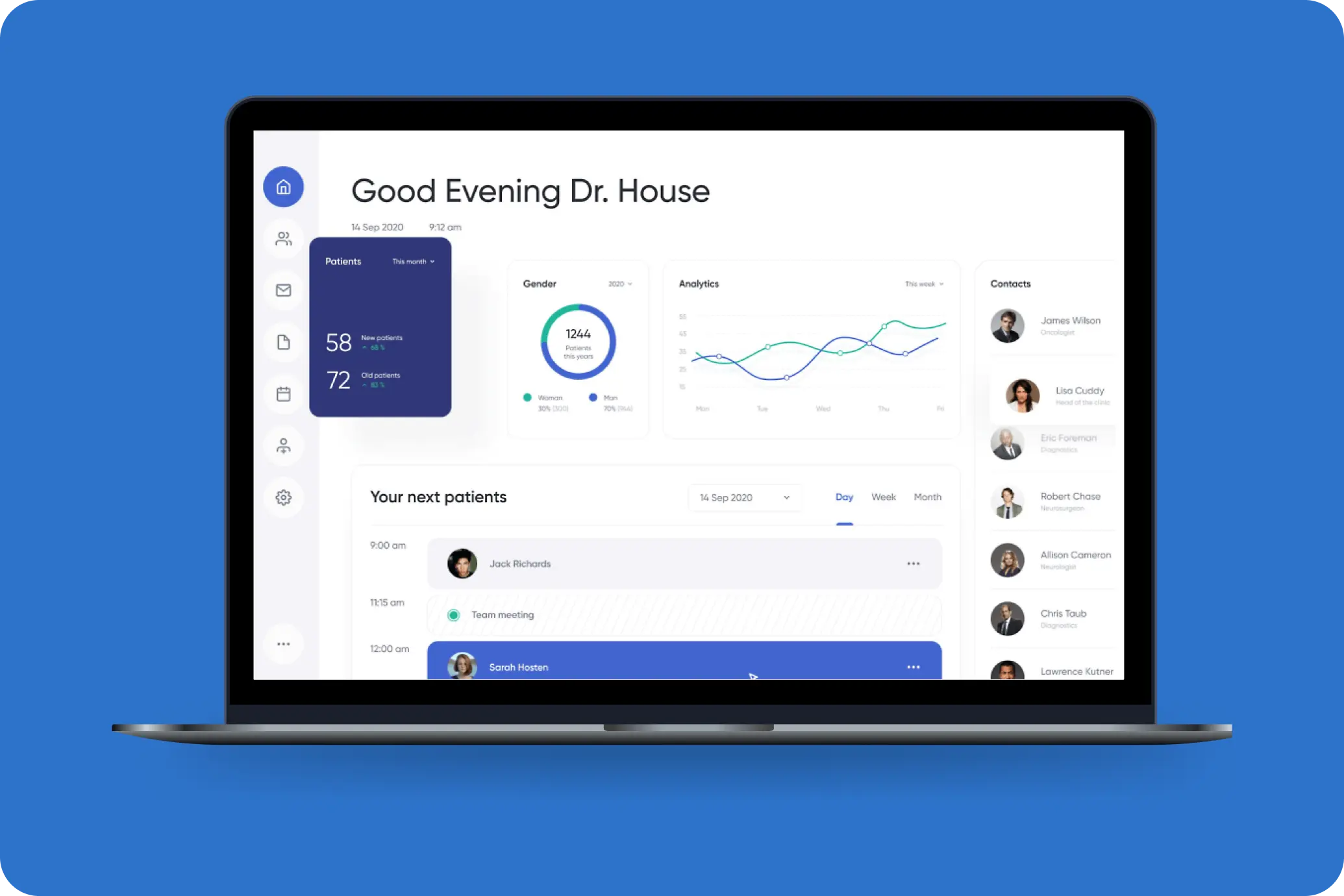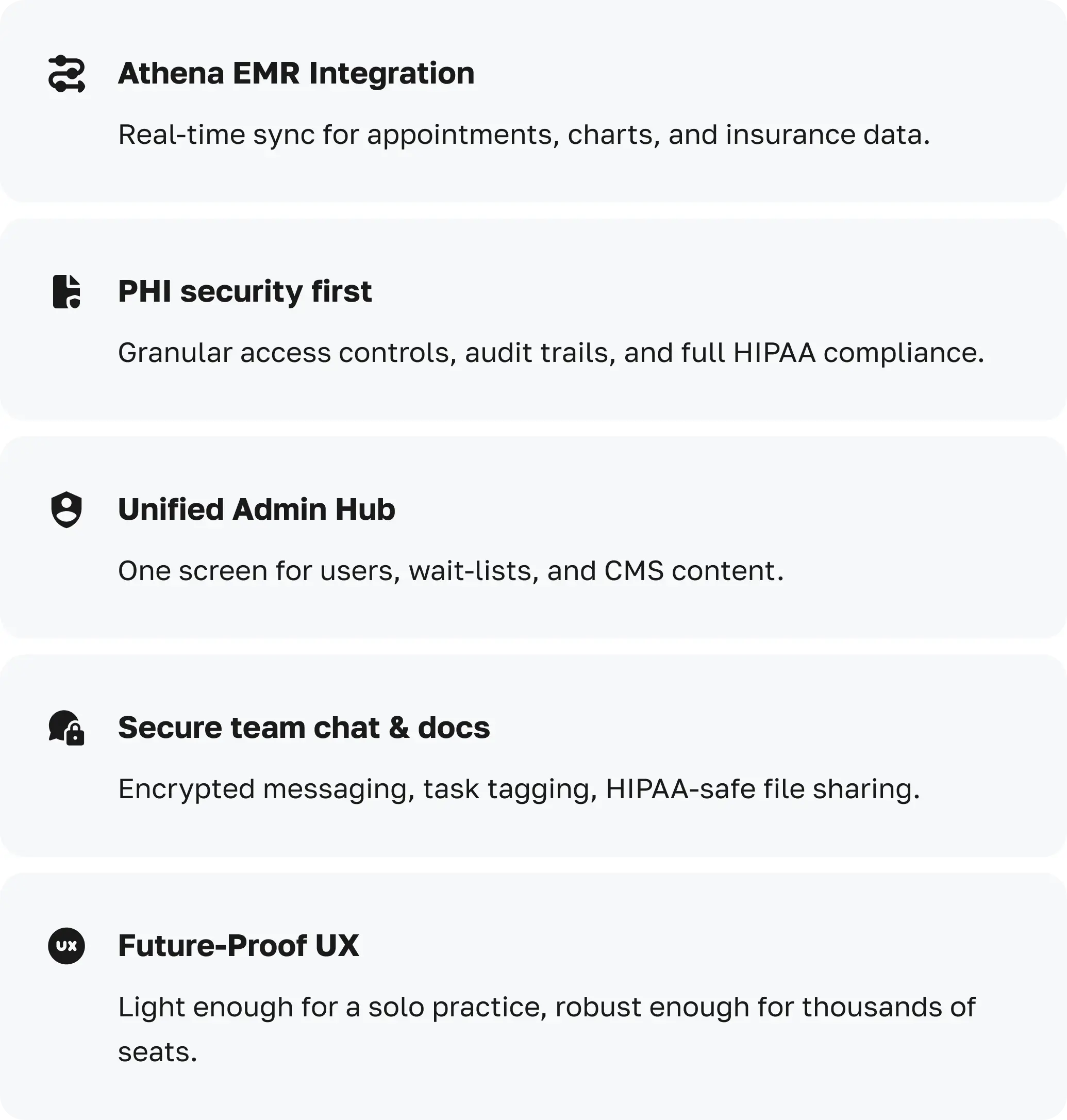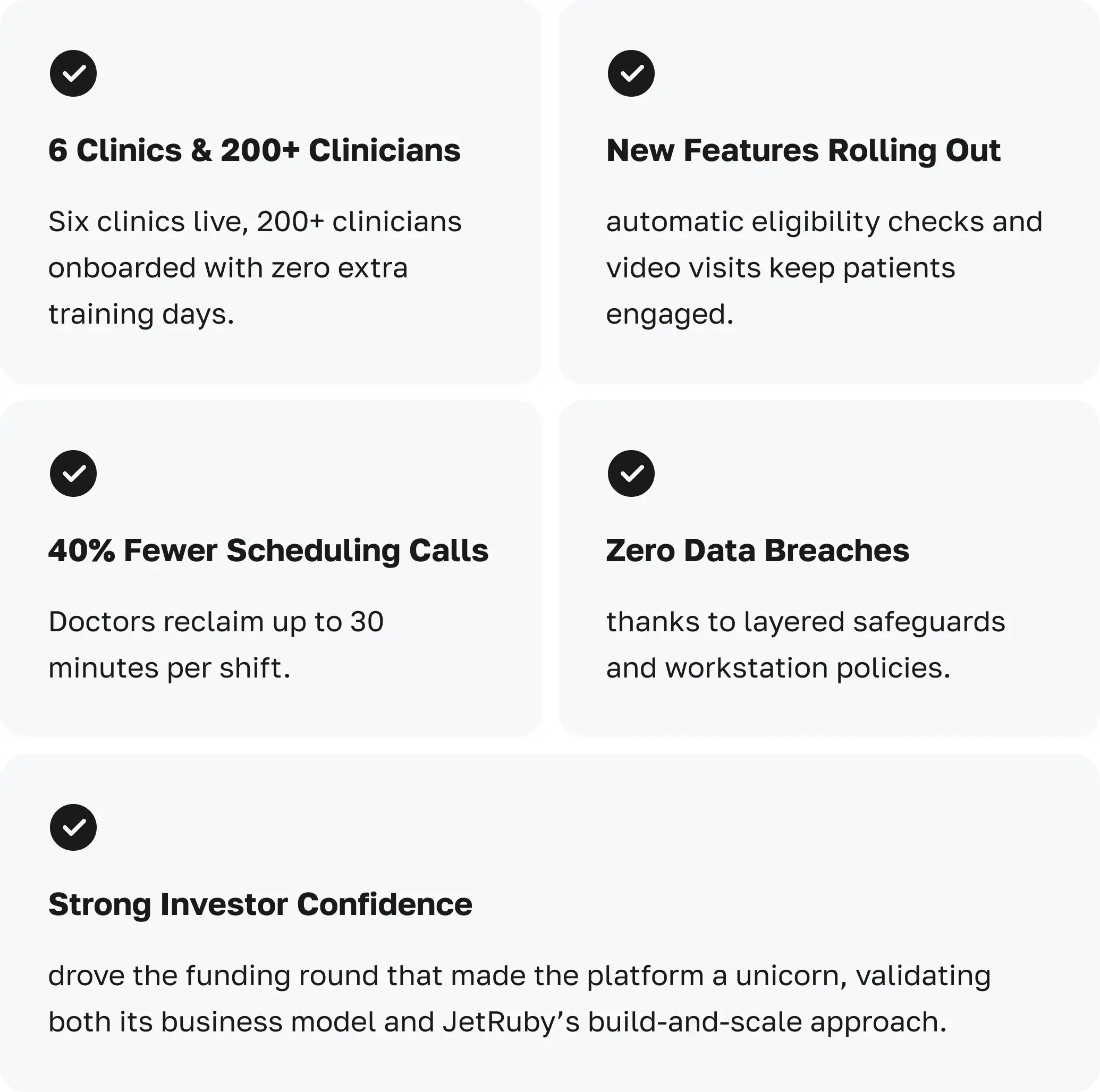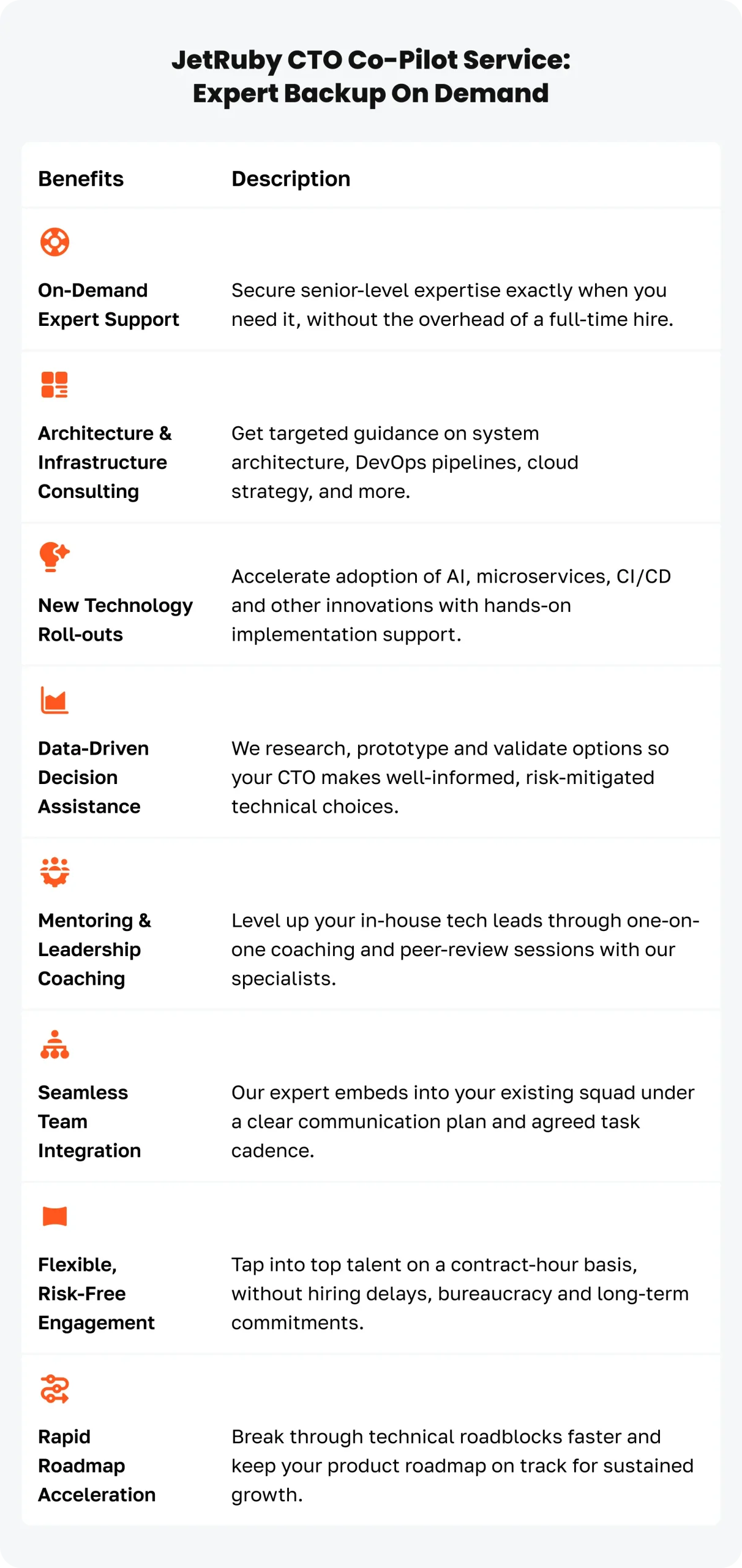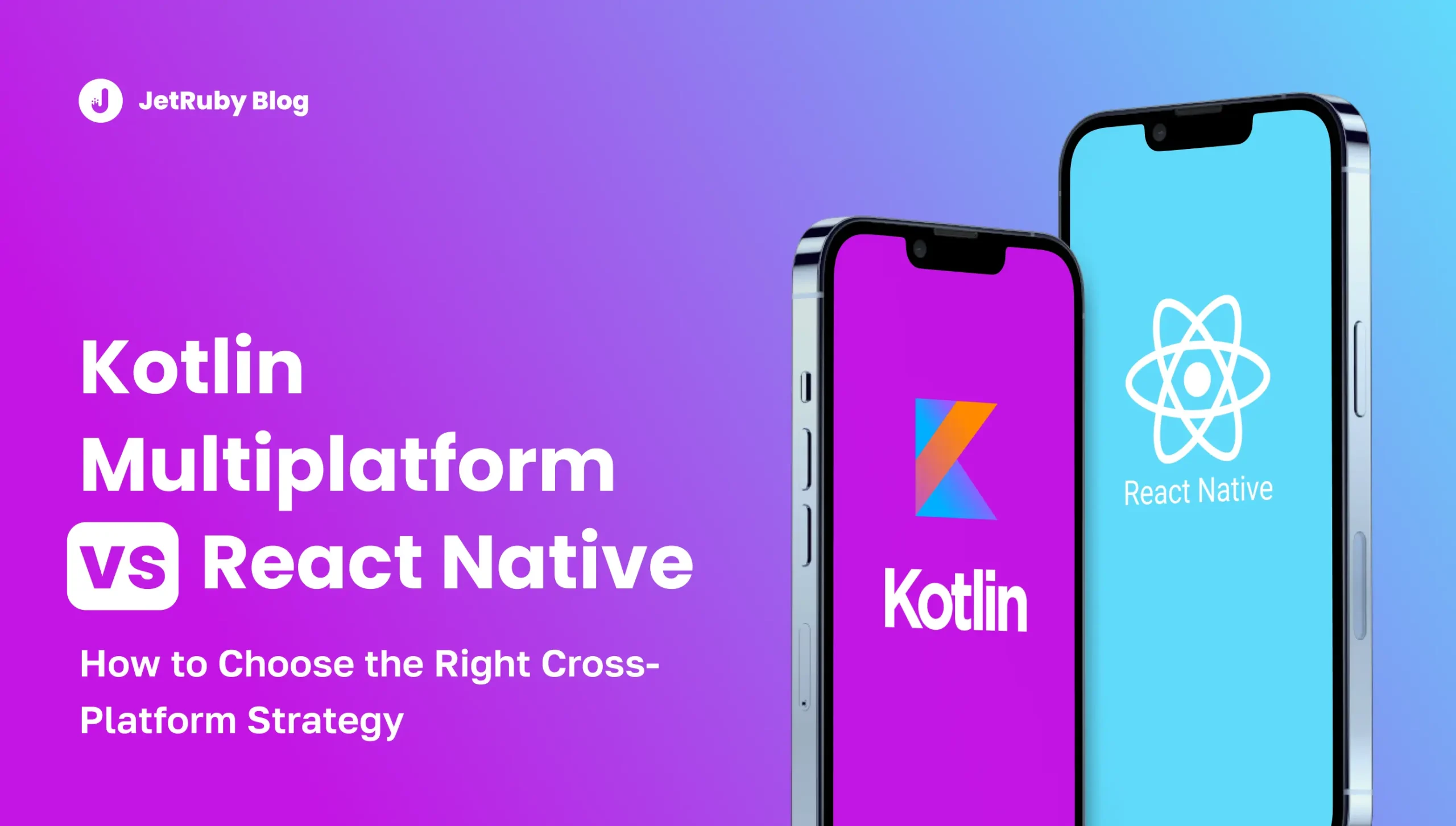Table of Contents
What if your hospital regained the hours lost to endless typing and idle scanners? AI has the potential to unlock $200 – $360 billions nationwide or about $15 – $25 millions a year for a 250-bed facility. That windfall buys more staff, sharper tech, and stronger community care for a smart healthcare industry.
Any healthcare provider who reclaims this time can reinvest it in bedside staff and community outreach. Across the wider healthcare system, a minute lost at triage can snowball into hours of downstream delay.
Curious how other sectors harness automation? Discover the 9 key benefits of AI in the supply chain.
Despite the promise, clinicians still spend nearly 2 hours inside the EHR for every hour with patients, and fewer than half of emergency-department x-ray reports reach doctors within the clinically recommended 1-hour window.
These delays show the potential of how AI can help healthcare solve time-sensitive gaps across the healthcare continuum.Each delay ramps up overtime, fuels burnout, and, what is most important, puts timely care at risk.
Here’s where speed and precision slip through the cracks:
- Diagnosis delays
- Chart-completion drag
- Patient-routing bottlenecks
- Equipment-downtime surprises
Below you’ll see an example of AI in healthcare modules that tackles each choke point, the returns early adopters report, and the first steps your team can take this quarter.
Key Takeaways
- AI targets the pressure points. Faster imaging reads, open beds, instant documentation, and real-time med checks stop delays from snowballing through care.
- Quality meets cash flow. Each module’s diagnostics, routing, and maintenance pairs a clinical win with a measurable revenue or cost-avoidance boost, improving the overall quality of care.
- Good data and no dice. Ambient scribes and chatbots shine only when they ingest clean EHR data and well-labeled training sets.
- Predict, don’t react. Forecasting bed demand and equipment failures days ahead beats scrambling after a backlog or breakdown.
- Automate tasks, not people. Offloading rote tasks cuts burnout, lifts retention, and lets healthcare workers focus on care, not clicks.
Pro Tip: Validate new features faster with these AI test automation tools for unit tests.
Where AI in Healthcare Elevates Care and Economics Alike
Imagine slipping a digital co-pilot into the tasks that now drain your budget and stretch your team. Artificial intelligence in healthcare and analytics weaves itself into everyday healthcare operations without a rip-and-replace overhaul.
By integrating AI with existing EHR and PACS feeds, you avoid the cost of ripping out legacy tools.
Quick Tip: Follow our blueprint to build a smart AI assistant in 8 steps for your CRM.
In the next 8 snapshots, we’ll look at AI devices in healthcare at work, see the dollars it puts back on your balance sheet, and feel the difference it makes in each patient’s day.
AI Devices in Healthcare: Medical Imaging & Diagnostics
A generative model now reviews every scan the moment it lands in PACS. AI analyzes contours, estimates tumor volume, and drafts heat-map reports that radiologists sign off in minutes.
The workflow trims turnaround by up to 40% while maintaining accuracy. The core AI algorithm was trained on millions of annotated scans and keeps learning from each new study.
Benefits for Your Clinic: You load MRI and CT machines evenly throughout the day, complete more studies without overtime, and push a multi-million-dollar scanner toward breakeven months sooner. A built-in “second reader” also cuts the risk and cost of missed findings.
These continuously refined AI models now match senior radiologists on sensitivity while cutting their workload in half.
Benefits for Your Patients: Personalize patient care with same-day answers, replacing anxious waits. Treatment starts earlier, survival odds rise, and the chance of discovering the disease at a late, costlier stage falls sharply.
Hint: See real-world wins in how JetRuby uses AI task automation.
Hospital AI: Predictive Bed & Equipment Management
This is hands-on AI automation in healthcare that many AI in hospitals pilots aim to copy. Johns Hopkins’ Capacity Command Center feeds HL7-ADT streams, OR calendars, and seasonal flu data into a machine-learning dashboard.
The forecasts push bed occupancy up from 85 % to 92 %, cut the wait to assign a bed by 3.5 hours, and bring in $16 million in extra annual revenue.
GE HealthCare’s OnWatch analytics monitor your MRI sensors around the clock and schedule service before peak demand. Clinics that deploy it report 35% fewer unplanned outages, so scanners stay billable when you need them most.
Benefits for Your Clinic: You fill beds optimally instead of paying for empty rooms or diverting admissions. Predictive maintenance keeps million-dollar machines online and delays costly replacements.
Benefits for Your Patients: They move straight into a ready bed, receive scans without last-minute cancellations, and leave the hospital as soon as care protocols allow. Less waiting, lower stress, faster recovery.
By the way, smooth shifts keep talent happy — apply these 13 Steps to Reduce Employee Turnover.
Advantages of AI in Healthcare: Smart Patient Routing & Scheduling
A reinforcement-learning agent monitors your schedule, timing each test or consultation, which is a clear proof of how AI can help in healthcare.
When radiology clogs, it reorganizes the route and sends the patient a new path. No one wastes steps or minutes hunting for the next room. AI algorithms can analyze live queue data and reroute patients within seconds.
Benefits for Your Clinic: With AI in Healthcare, every suite runs at a steady, predictable load. Peak-hour bottlenecks flatten, staff overtime drops, and higher satisfaction scores turn into better online ratings and repeat visits.
Benefits for Your Patients: Clear, real-time prompts replace hallway confusion. They complete a full diagnostic loop in hours instead of an entire day, head home sooner, and carry far less stress while they wait for answers.
AI in Patient Care: NLP-Driven Clinical Documentation
At the point of care, AI can be used to transcribe visits and code them instantly. Ambient scribes transcribe visits and code them instantly. The capabilities of AI healthcare here slash pajama-time charting by 30%.
Benefits for Your Clinic: Faster encounters lift room turnover, so you see more patients without overtime. Clean, code-ready notes reach payers the same day, accelerating reimbursement and reducing denials.
Benefits for Your Patients: Your doctor keeps eye contact instead of typing. Complete notes mean fewer missed details, and e-prescriptions drop into the pharmacy queue before the patient leaves the room.
Concerned about workforce impact? Read Why You Shouldn’t Fear AI Taking Jobs.
AI and Healthcare Communication: Chatbots & Virtual Triage
As one of the most common forms of AI used in healthcare, these digital AI assistants show the benefits of using AI in healthcare before a patient arrives. Not to mention that better bots start with better data — see Understanding AI Training Data.
A large-language-model chatbot on your website or app can handle the first conversation, ask follow-up questions, rate symptom severity, and book the right slot. Weill Cornell Medicine saw a 47% jump in appointments booked digitally after turning that “digital front door” on.
Benefits for Your Clinic: Around-the-clock self-service deflects routine calls, so your contact-center staff focus on complex cases and spend fewer paid hours on hold music.
Benefits for Your Patients: People get guidance and a confirmed visit in minutes, which means no more busy tone or daylight restrictions. Immediate answers lower anxiety, and urgent red-flag cases pass smoothly to a live nurse, protecting safety while speeding access to care.
AI Technology in Healthcare: Predictive Maintenance for Imaging & Lab Equipment
This AI technology in healthcare keeps expensive hospital AI assets running instead of gathering dust.
Smart sensors stream temperature, vibration, and load data from each MRI into an AI console. Spotting a bearing drift, the model triggers a work order immediately, so techs are able to swap parts during planned downtime.
Benefits for Your Clinic: Predictable service windows replace emergency repairs. Scanners stay billable, rental and overtime costs reduce, and high-value gear pays for itself faster.
Benefits for Your Patients: Their scan goes ahead on schedule — no last-minute cancellations. Treatment starts on time, and diagnostic accuracy stays high because equipment is always in peak condition.
Role of Artificial Intelligence in Healthcare: AI-Guided Precision Treatment Plans
Here, AI can be used to match pharmacogenomic markers to dosing guidelines in real time. It signals the future of AI for healthcare, a textbook example of the technology’s role in improving outcomes.
Picture an EHR screen that combines labs, pharmacogenetics, and past drug responses, then recommends the best dose and explains why. In the PREPARE trial (6,950 adults across seven countries) this setup cut adverse reactions by 30% and drove clinicians to adjust therapy in 70% of visits.
Benefits for Your Clinic: Fewer drug-related complications mean fewer costly readmissions and shorter stays. Cleaner outcomes boost quality scores and strengthen your reputation with payers and referring physicians.
Benefits for Your Patients: Therapy fits their biology from day one, so side effects drop and recovery speeds up. They gain confidence that the plan is truly “for me”, not “for the average patient”.
Benefits of AI in Healthcare: Medication Safety & Drug-Interaction Alerts
Few other uses of AI and healthcare scenarios show the payoff when AI in healthcare prevents harmful drug combinations on the spot.
The moment you click “Order,” your e-prescribing screen becomes a safety net. An NLP engine checks dose, route, labs, and the full med list against FDA and WHO data. If it spots a risk, it shows an alert with safer options before the script leaves your desk.
Benefits for Your Clinic: Fewer errors mean fewer malpractice payouts and regulatory fines. Clean, coded orders pass payer edits the first time, so reimbursements arrive sooner and revenue isn’t bled away by claim denials.
Benefits for Your Patients: Patients get the right treatment at the right dose. They avoid dangerous drug interactions and unexpected side effects that could send them back to the ER.
Elevate with CTO Co-Pilot Elevate your development with our CTO Co-Pilot! Get expert support, AI audits, cost analysis, and a detailed implementation plan - or let us handle full implementation.
AI Automation in Healthcare: Trusty Care Case Study
Trusty Care helps health-insurance advisors match clients with the best plans. They couldn’t afford a crash when 90% of customers switch policies at once. JetRuby stepped in, replaced fragile Node.js / Vue.js code with a hardened backend, and tuned the stack to survive renewal-season surges.
Pro Tip: AI can also inspect code quality with AI Code Review for Ruby on Rails Projects.
Challenges
Stabilizing renewal-season traffic came down to four urgent challenges:
Results
Tackling those issues delivered measurable gains; here are the results now live:
AI in Healthcare Sector: Practice Management Case Study
A consortium of U.S. private hospitals asked JetRuby to craft a practice-management platform that books visits, syncs records, and cuts paperwork to just a few clicks. We designed a HIPAA-ready system that plugs straight into Athena EMR and scales from a single clinic to a nationwide network.
After launch and rapid uptake, the company’s valuation topped $1 billion, officially making it a healthcare-tech unicorn.
Challenges
Building a multi-clinic platform that could scale nationwide hinged on five critical hurdles:
Results
Clearing them unlocked rapid growth and a unicorn valuation; the numbers speak for themselves:
JetRuby CTO Co-Pilot Service: Expert Backup on Demand
Here’s how the CTO Co-Pilot integrates with your team to deliver expert guidance. Our expert, experienced in cloud, security, and AI Healthcare platforms, joins your roadmap to audit the stack, and show where AI can enhance performance or cut costs.
Review the key benefits below to see how you can close skill gaps and accelerate your digital-health roadmap.
Co-Pilot steps in when your roadmap needs skills beyond the core stack. A senior architect with deep cloud, clinical data, and AI Healthcare expertise embeds directly with your developers, reviewing pull requests and showing where AI can enhance speed or reliability.
If you already have an in-house CTO, our fractional CTO simply extends that bench, covering gaps in expertise or time. The Co-Pilot patches architecture issues, fast transfers proven healthcare patterns, and mentors the team to support healthcare professionals long after we roll off.
Pro Tip: Thinking about bringing in or leveling up a tech leader? Read What Is a CTO? The Real Meaning Behind the Title in Business first to align everyone’s expectations.
Each engagement starts with a quick audit that surfaces regulatory risks associated with AI healthcare and spots quick wins. We lock scope, cost, and timeline, code shoulder-to-shoulder, and stay until quality and safety metrics stabilize, then you take the reins.
Ready to Transform Your Operations?
If you’re ready to move beyond pilots and embed artificial intelligence in clinical workflows, use our Contact Us form to schedule a call, discuss your challenges, and map out a tailored AI healthcare development plan with JetRuby today.
